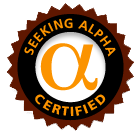Explaining Quarterly Conference Calls
One of my most important jobs as a money manager is to keep up with the latest corporate news. During the first half of each calendar quarter, much of this work is done by listening to the quarterly conference calls companies conduct when the y report their quarterly earnings. Typically, a company will report its earnings via press release before the stock market opens in the morning or shortly after the market closes. A conference call is usually scheduled within a few hours of the press release, although sometimes companies report after the close hold their conference calls the next morning. I use a service named CallStreet to find out when the conference calls will occur. For the week of October 18, Call Street lists about 750 scheduled conference calls! There are about 30 by companies I care about for one reason or another, and I have 18 listed on my calendar. I’ll probably listen to 5 to 10, read transcripts of another 5 to 10, and rely on Wall Street research for the balance….
While this seems daunting and continues for at that pace for about three weeks every “earnings season,” I think it is important to get broad exposure to these calls. I follow virtually every industry but my expertise is in media and telecom stocks. It is crucial for me to place each company’s results and comments in perspective to what is happening with their comments. For example, this past week, most of the major newspaper companies reported earnings and held calls. I listened to Gannett and Dow Jones live and relied on transcripts and Wall Street research for E.W. Scripps, New York Times, and Knight-Ridder.
The structure of the call is for the CEO, COO, and CFO to recap quarterly results, discuss the company’s outlook (or “guidance” in Wall Street lingo), and take questions from Wall Street analysts and portfolio managers. The calls usually last one hour with the recap and guidance taking 15 to 30 minutes. For larger companies, the Q&A is usually limited to the analysts that work for the major brokerage firms like Goldman Sachs and Morgan Stanley. For mid-size and smaller companies, the Q&A is often open to anyone as long as you are pre-registered with the company.
For most large company calls, I listen to the webcast. The webcast is designed to insure that the company is meeting its Regulation Full Disclosure requirement of disseminating material information simultaneously to all interest parties. I can

